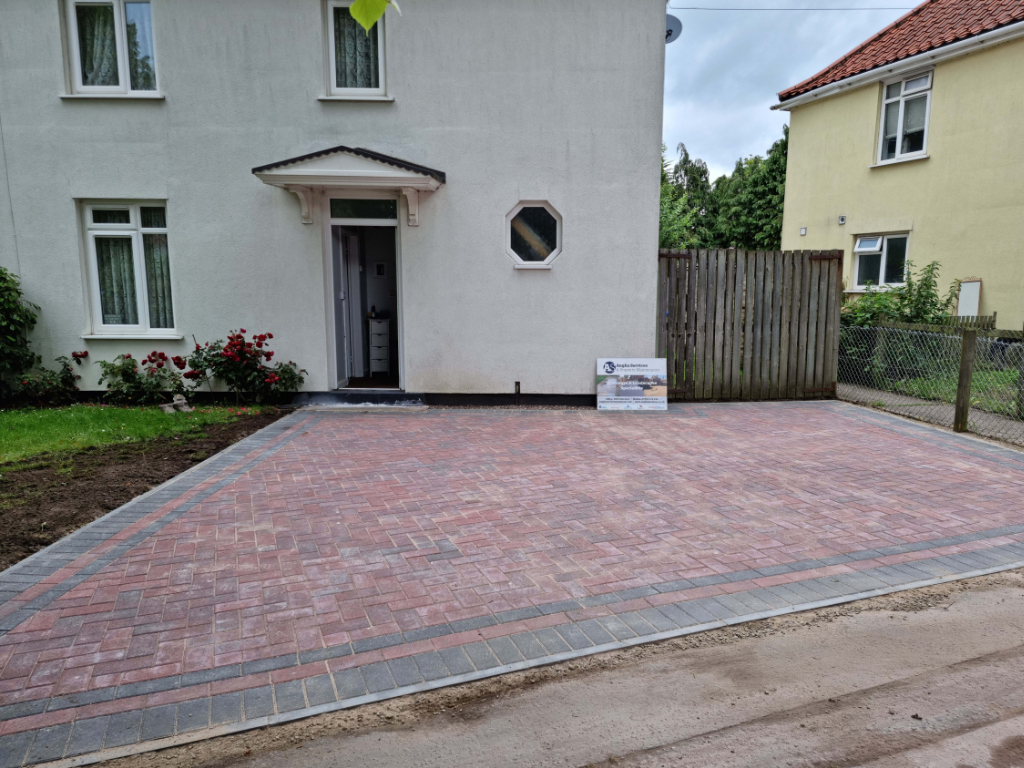How to Fix a Block Paving Driveway That’s Holding Too Much Water
A block paving driveway is a durable and visually appealing choice for many homeowners, but issues can arise if water starts to pool on the surface. Standing water not only affects the driveway’s appearance but can also lead to long-term structural damage, creating an unsafe and unsightly surface. Understanding the causes and solutions can help you restore your driveway and prevent future drainage issues.
For property owners in Great Yarmouth, Norfolk, where wet weather can contribute to drainage problems, addressing water retention in a block paving driveway is essential to maintaining a functional and attractive outdoor space.
Causes of Water Retention in Block Paving Driveways
Poor Drainage System
If your driveway lacks a proper drainage system, rainwater can accumulate on the surface instead of draining away. This is common in driveways that were not designed with a gradient to direct water towards a suitable drainage point.
Compacted or Blocked Sand Joints
Block paving driveways rely on sand-filled joints to allow for minor movement and drainage. Over time, these joints can become compacted or blocked by dirt, moss, or weeds, preventing water from seeping through as intended.
Sub-Base Issues
A poorly constructed or inadequate sub-base can lead to water retention. If the base layer underneath the paving blocks does not have the correct depth or materials, it can trap water instead of allowing it to drain naturally.
Uneven Surface or Sunken Blocks
Over time, paving blocks can shift due to wear, traffic load, or ground movement. If sections of the driveway become uneven or sink, water will naturally collect in the lower areas instead of flowing towards drains or permeable surfaces.
Solutions for Fixing Water Retention in a Block Paving Driveway
Cleaning and Re-Sanding Joints
One of the simplest ways to improve drainage is to clear out clogged sand joints and replace them with fresh kiln-dried sand. This allows water to drain more effectively between the blocks.
How to do it:
- Use a pressure washer or stiff brush to remove dirt, moss, and debris from the joints.
- Allow the surface to dry completely.
- Refill the joints with kiln-dried sand, sweeping it into the gaps to stabilise the blocks and improve permeability.
Adjusting the Driveway Gradient
If your driveway was not installed with the correct slope, you may need to modify its gradient to help water flow towards drainage points. This is a more complex solution that may require lifting and relaying sections of the driveway.
How to do it:
- Identify areas where water is pooling.
- Remove the affected paving blocks carefully.
- Adjust the sub-base to create a gentle slope towards a drain.
- Relay the blocks and secure them with new jointing sand.
Installing Additional Drainage Solutions
If your driveway has persistent drainage issues, installing a drainage system can help manage excess water effectively.
Common solutions include:
- Aco drains (linear drainage channels): Installed along the edges or centre of the driveway to channel water away.
- Soakaways: Underground drainage systems that absorb excess water.
- Permeable block paving: Replacing standard blocks with permeable alternatives that allow water to pass through.
Repairing Sunken or Uneven Paving Blocks
If water is pooling in certain areas due to sunken or misaligned blocks, these sections need to be lifted and relevelled.
How to do it:
- Carefully remove the affected blocks using a lifting tool.
- Check the sub-base for signs of sinking or erosion.
- Add or compact additional sub-base material if necessary.
- Relay the blocks and ensure they are level with the surrounding paving.
Improving the Sub-Base Material
For driveways with ongoing water retention issues, the sub-base material may not be draining effectively. A professional contractor can excavate the existing base and replace it with a more permeable material, such as crushed stone or a geotextile membrane, to improve drainage.
Preventing Water Retention in Block Paving Driveways
Regular Maintenance
Routine maintenance helps prevent blockages and drainage issues from developing. Cleaning the surface, re-sanding joints, and checking for signs of shifting blocks can keep the driveway in good condition.
Keeping Gutters and Drains Clear
Ensure that any nearby drains or gutters are free from debris, as blocked drainage channels can contribute to excess water pooling on your driveway.
Choosing Permeable Paving Options
If you are considering a new driveway or extensive repairs, opting for permeable block paving can help mitigate future water retention problems. These specially designed blocks allow rainwater to filter through, reducing surface water accumulation.
Conclusion
A block paving driveway that holds too much water can lead to structural damage and safety concerns if left untreated. By identifying the root cause—whether it’s poor drainage, blocked joints, or an uneven surface—you can apply the right solution to restore proper water flow.
For homeowners in Great Yarmouth, Norfolk, professional driveway services can provide expert advice and repairs to ensure your block paving remains functional and visually appealing. If your driveway is experiencing drainage issues, contact us today for a tailored solution to keep your outdoor space in top condition.
Call us on: 01493 807 282
Click here to find out more about Great Yarmouth Driveways
Click here to complete our contact form and see how we can help with your driveways.

